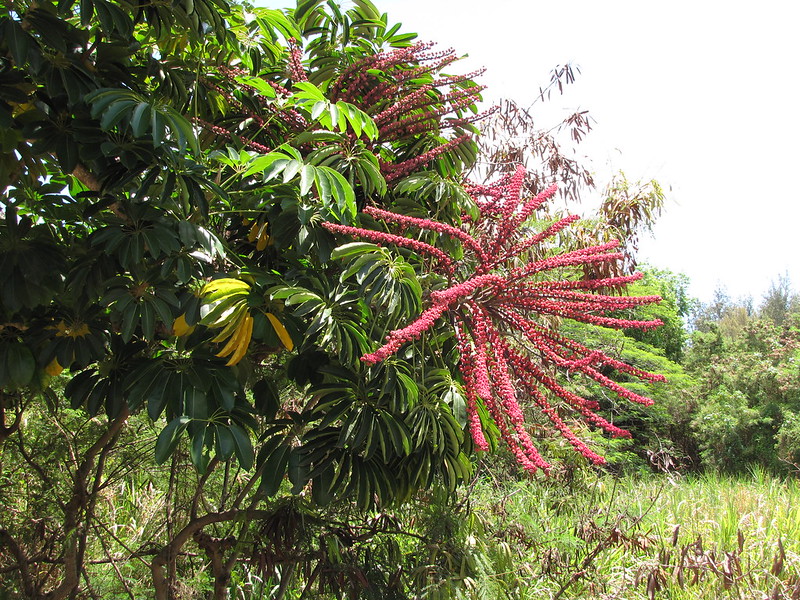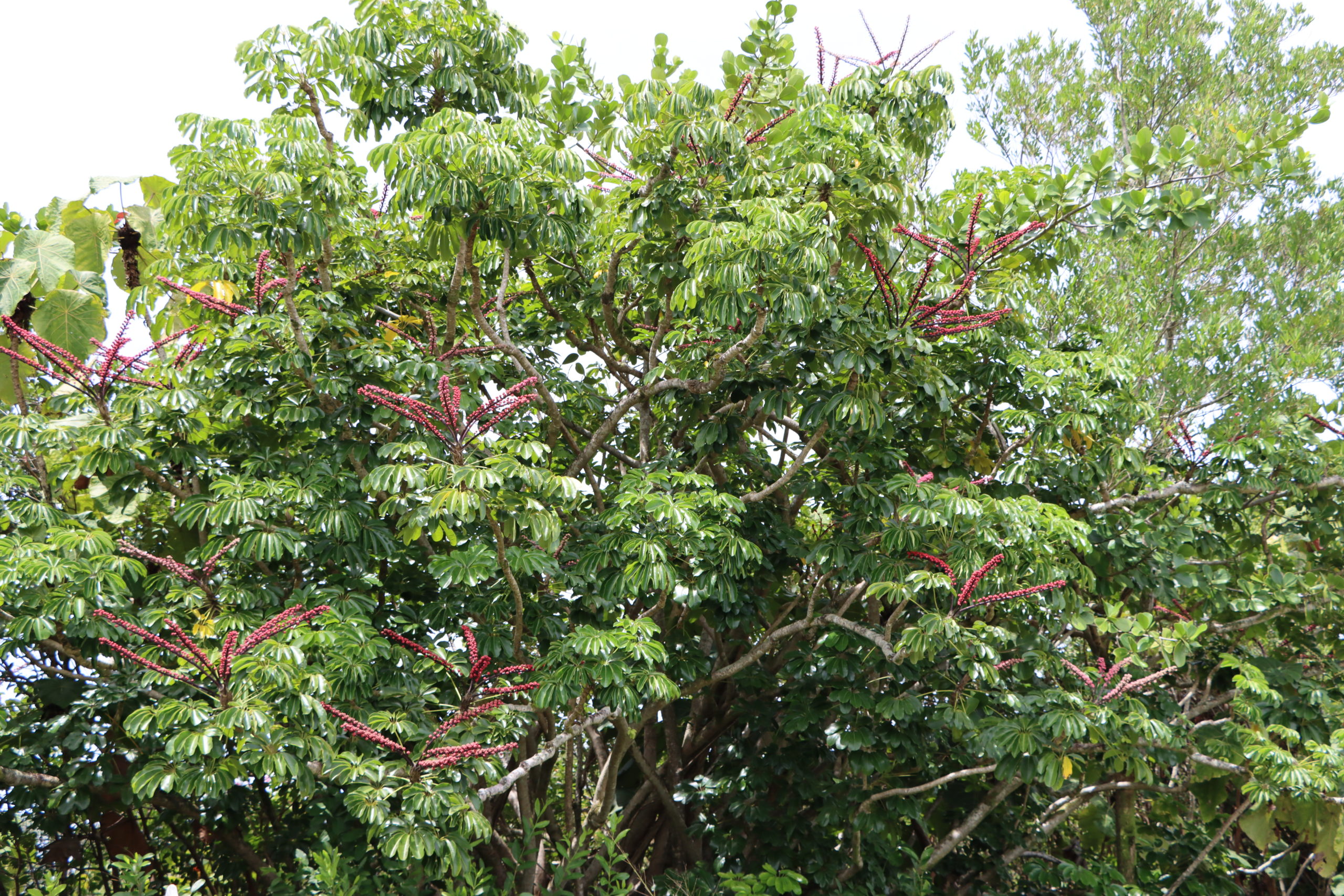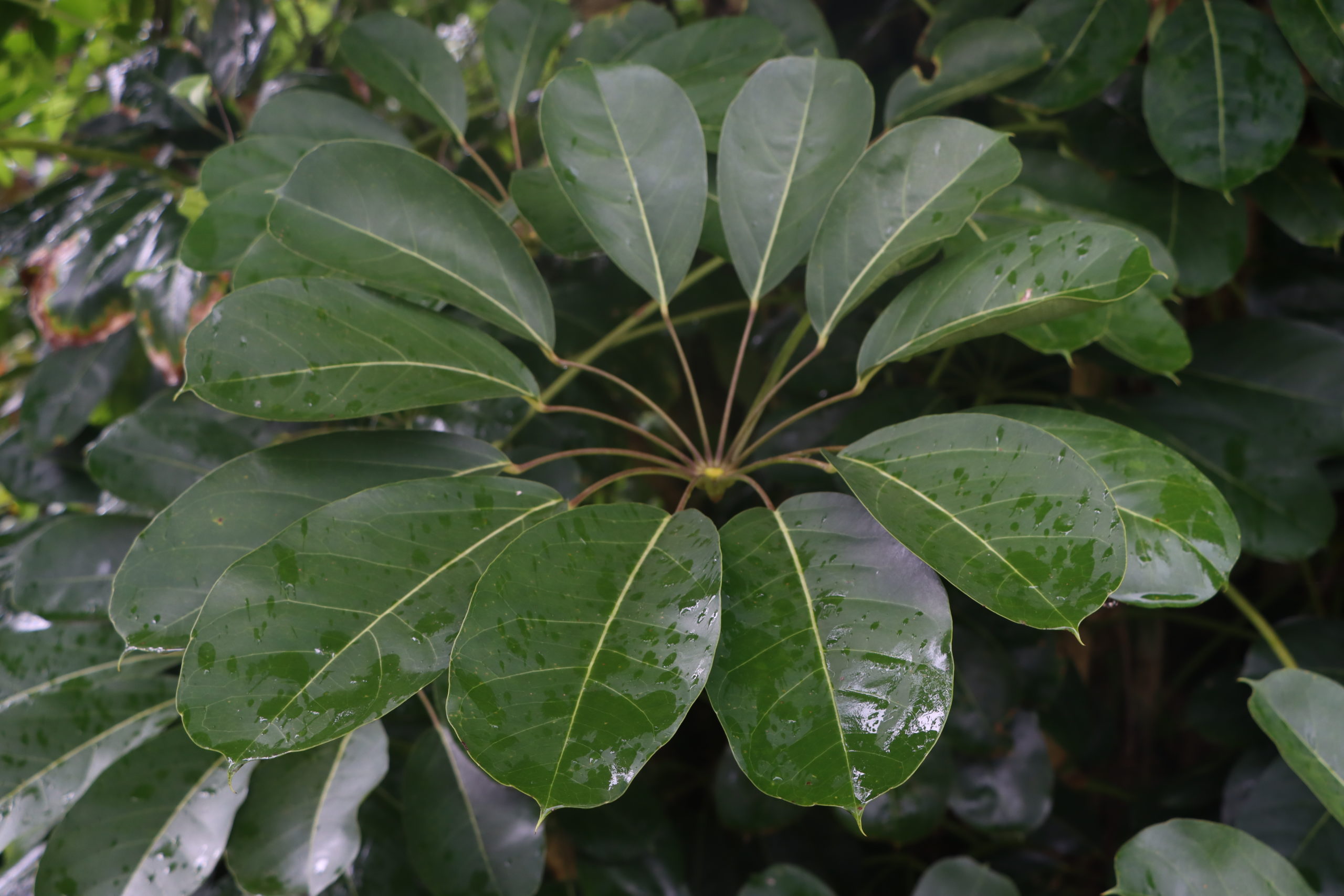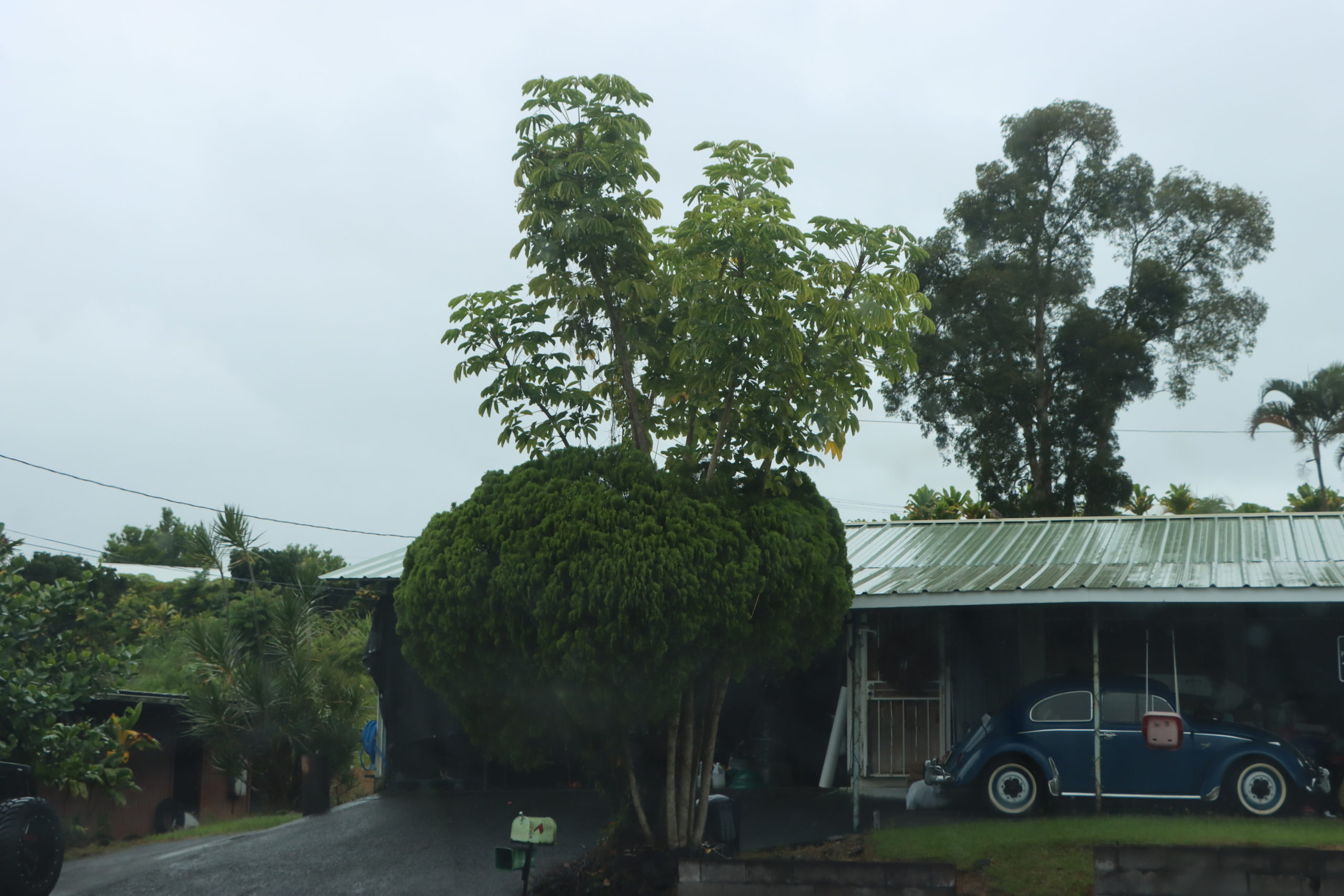
Octopus Tree
Native to Australia and parts of New Guinea, Octopus Tree (Schefflera actinophylla) has been present in Hawai‛i since about 1900, likely introduced for ornamental purposes. Today, it is a pest on all the main Hawaiian Islands.
Impacts:
- Easily spreads into the forests and forms dense thickets
- Produces dense shade, inhibiting understory plant growth
- Sometimes germinates on another plant, after the roots reach the ground it begins to strangle its host tree
Description:
- A tree up to 45 ft tall, branches at the base and sparingly above
- 5-18 leaflets (up to 1 ft long) grow in a circle compound on the tip of a 2 ft long stem
- Palmately compound leaf resembles a hand
- Small red flowers grow closely on floral branches; bright red fruit (1/4 in) grow on a branch giving the appearance of octopus tentacles
Octopus Tree (Schefflera actinophylla)



Photos: BIISC
Controlling Octopus Tree
Physical control: Physical removal is difficult. Octopus tree coppices vigorously after cutting. Cut mature trees and repeat as needed. Multiple stems will regrow from the stump. Pull out small seedlings. Dispose of green waste to prevent vegetative reproduction. Hire a licensed arborist for large or hazardous trees.
Chemical control: Application method: Incision Point Application (IPA) or cut stump.
Effective herbicides:
Directions: Using a hatchet or machete, make incisions ‛hacks’ at a 45-degree angle into the sapwood. At about waist high, make a hack every 2 inches around the trunk to make a circle. Apply .5 ml of undiluted herbicide into each hack.
In BIISC’s herbicide trials, both herbicides were effective. Complete defoliation occurred within 180 days.
